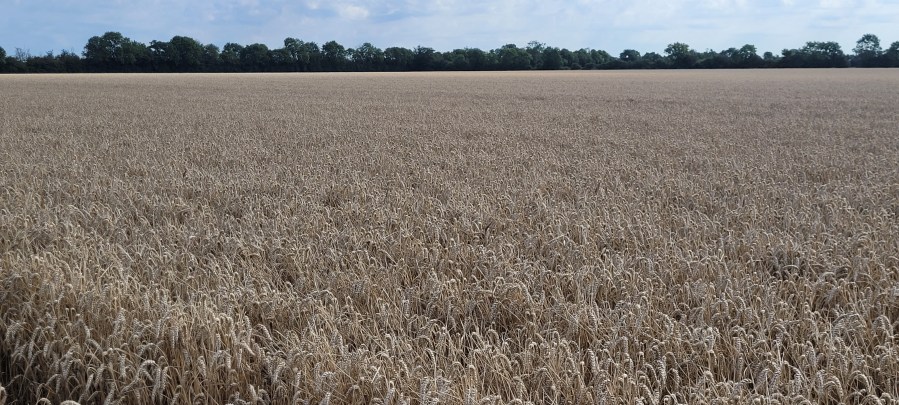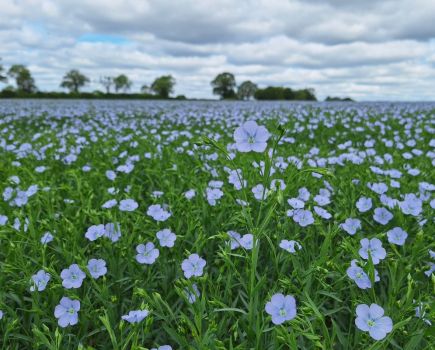A Group 2 winter wheat has bucked recent trends of low specific weights for milling quality to perform beyond expected for one Northamptonshire grower.
Emma Bletsoe says she’s ‘delighted’ with her first crop of Mayflower and as a result, plans to drill at least 60ha of the variety later this autumn.
For Harvest 2023, around 30ha of Mayflower (Elsoms Seeds) was cut between 10-16 August at 13-15% moisture and achieved an average yield of 10.62t/ha.
Emma, who farms 490ha at Denford Ash Farm near Ketting alongside son George and farm manager Stuart Prior, says despite a stop-start harvest they were delighted with the overall results, with one field achieving 11.18t/ha.
All-round package
“Stuart noted that it combined extremely well, producing a nice bold grain with early samples confirming a high Hagberg of 335-368 and an overall specific weight of 78kg/hl. It was George’s decision to go with Mayflower last year, based largely on a solid untreated yield figure of 93% on the Recommended List, together with an excellent overall disease resistance package that includes an 8.9 for Septoria,” she explains.
“As part of our IPM strategy for blackgrass control we usually establish our wheats a little later into the autumn and drilled Mayflower between 5 October and 12 October last year using a tine drill on one field and a Horsch Pronto on the other.
“All of the Mayflower was grown as a first wheat following winter beans and established well showing good early vigour,” explains Emma.
Nitrogen strategy
The farm’s nitrogen strategy began in mid-February with 248kg/ha of Piamon 33N. This was followed by 140kg/ha of urea applied in early March before a final application of ammonium nitrate at 110kg/ha which was applied between 27 April and 3 May.
“Following advice from our independent agronomist, Damian MacAuley of Indigro, we went with a three-spray fungicide programme consisting of a T1, T2 and T3 spray. At T2 we included the plant growth regulator Terpal (mepiquat chloride+ 2-chloroethylphosphonic acid) in the tank mix for additional insurance, and, by late May, Mayflower was standing well and looking clean despite high disease pressure earlier in the spring.
“Damian confirmed that the variety made good use of a slightly restricted nitrogen programme as a legacy of last year’s high fertiliser prices,” she says.
Difficult conditions
According to Elsoms’ head of technical, George Goodwin, there’s little doubt that this year’s challenges have had an impact on harvest. “Many farmers have frustratingly navigated a stop-start harvest which has negatively affected both yield and quality. We’ve had all of the right weather this year, just in the wrong order – the cool, wet spring meant cereal crops were less resilient to take on the extended dry, hot period we experienced across May/June.
“It feels like insult to injury to have what’s predicted as the wettest March and July on record in the same year, yet, at the same time, it’s an ideal scenario for showcasing varieties like Mayflower’s resilience,” he concludes.




